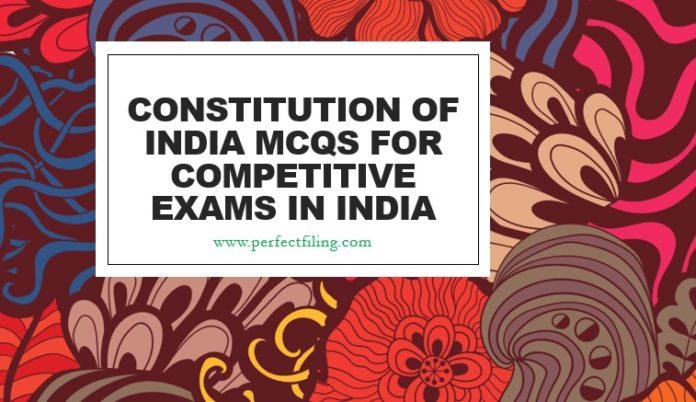The Constitution of India is the supreme law of India. The document lays down the framework that demarcates fundamental political code, structure, procedures, powers, and duties of government institutions and sets out fundamental rights, directive principles, and the duties of citizens.
The Supreme Court is the highest judicial court in India. It upholds and uplifts the rule of law and also ensures and protects citizens’ rights and liberties as given in the Constitution. Therefore, the Supreme Court is also known as the Guardian of the Constitution.
Parliament of India
Parliament of India consists of the President and two houses. The lower house is called the House of the People- Lok Sabha, while the upper house is known as the Council of States- Rajya Sabha.
Council of Ministers
Council of ministers shall be composed of not less that 250 members, of whom 12 shall be nominated by the President and the remainder 238 shall be representatives on the States and Union Territories elected by the method of indirect election.
Nomination- The 12 nominated members shall be chosen by the President from amongst persons having special knowledge or practical experience in literature, science, art and social service.
Representation of States
The representatives of each State shall be elected by the elected members of the Legislative assembly of the State in accordance with the system of proportional representation by means of a single transferable vote.
Representation of Union Territories
The representatives of the Union Territories shall be chosen in such a manner as Parliament may prescribe. Under this power, the Parliament has prescribed that the representatives of Union Territories to the Council of States shall be indirectly elected by members of an electoral college for that territory, in accordance with the system of proportional representation by means of the single transferable vote.
Note: Answers highlighted in Green are right answers.
81. In a federal system, the guardian of the Constitution is
a. the Parliament
b. the Judiciary
c. the council of Ministers
d. the National Security Advisor
82. The Union Legislature in India is empowered
a. Not to amend the basic structure of the Constitution
b. to amend the basic structure of the Constitution
c. To abrogate the basic structure
d. None of these
83. The states enjoy exclusive jurisdiction over subjects of
a. Union list
b. State list
c. Residuary List
d. Concurrent list
84. Majority provisions of the Constitution of India can be amended by
a. the Parliament
b. The President
c. the State Legislature
d. the Parliament of the consent of states
85. The procedure for amending the Constitution is in
a. Article 368
b. Article 360
c. Article 367
d. Article 371
86. The list dividing powers between union and states are given in the ————- schedule
a. IV
b. V
c. VI
d. VII
87. Operation of law means…..
a. prospective operation of law
b. retrospective operation of law
c. both as above a and b
d. none of above
88. What is mean repeal of law?
a. change in law
b. amendment in law
c. removal or reversal of law.
d. none of above
89. General clauses Act enacted in the year…
a. March 11, 1897
b. January 15, 1920
c. August 15 1987
d. December 31, 1975
90. The term morals refer…
a. ethics or principles
b. legal rules by a competent authority .
c. only above a is correct
d. both a and b correct.
FAQs For Constitution of India
Answer: The judiciary is called the Guardian of the Constitution because it has the power to interpret the Indian Constitution.
Question 2: Who is the guardian of fundamental rights?
Answer: The judiciary has the power of judicial review, which gives the courts, the power to examine the laws made by the legislature and declare it invalid if it violates the Fundamental Rights. Hence, the judiciary is called the guardian of fundamental rights.
Question 3: What is Legislature of the Union?
Answer: Legislature of the Union, which is called Parliament, consists of the President and two Houses, known as Council of States (Rajya Sabha) and House of the People (Lok Sabha). Each House has to meet within six months of its previous sitting.
PARLIAMENT OF INDIA
| Type | Bicameral |
| Houses | Council of States (Upper house) House of People (Lower house) |
| History | |
| Founded | 26 January 1950 (72 years ago) |
| Preceded by | Constituent Assembly of India |
| Leadership | |
| President of India | Droupadi Murmu
since 25 July 2022 |
| Vice President of India & Chairman of the Rajya Sabha | Jagdeep Dhankhar since 11 August 2022 |
| Deputy Chairman of the Rajya Sabha | Harivansh Narayan Singh, JDU since 14 September 2020 |
| Leader of the House in Rajya Sabha | Piyush Goyal, BJP since 14 July 2021 |
| Leader of the Opposition in Rajya Sabha | Mallikarjun Kharge, INC since 15 February 2021 |
| Speaker of the Lok Sabha | Om Birla, BJP since 19 June 2019 |
| Deputy Speaker of the Lok Sabha | Vacant since 23 May 2019 |
| Leader of the House in Lok Sabha | Narendra Modi, BJP since 26 May 2014 |
| Leader of the Opposition in Lok Sabha | Vacant (Since 26 May 2014, No party has 10% Seats, other than the BJP) |
Question 3: What is Union Legislature in India?
Answer: The Union Legislature in India is empowered not to amend the basic structure of the Constitution. The function of the legislative is to form policies and laws that will govern the nation. The Union Parliament is chiefly concerned with this function. To ensure that these functions are duly followed, Constitution of India provides for two houses, Lok Sabha or the Lower House and Rajya Sabha or the Upper House.
Question4: How many Union List States Concurrent List?
Answer: The Seventh Schedule to the Constitution of India defines and specifies allocation of powers and functions between Union & States. It contains three lists;
i.e. 1) Union List ,
2) State List and
3) Concurrent List .
Originally there was 97 subjects in union list but now it is 98 subjects in union list.
Question5: How many items are in a Union List?
Answer: Union list or List-I is a list of 98 numbered items (after 101st Constitutional amendment act 2016, entry 92 and 92c removed) given in Seventh Schedule in the Constitution of India on which Parliament has exclusive power to legislate.
Question 6: Is Union List and Concurrent List same?
Answer: The Union List details the subjects on which the Parliament may make laws while, state list details those under the purview of state legislatures. The Concurrent list on the other hand has subjects in which both Parliament and state legislatures have jurisdiction
Question 7: How many items are there in state list?
Answer: The State List or List-II is a list of 61 items. Initially there were 66 items in the list in Schedule Seven to the Constitution of India. The legislative section is divided into three lists: the Union List, the State List and the Concurrent List.
Question 8: Is GST in Concurrent List?
Answer: The Ministry of Finance (Department of Revenue) clarified their position with the narrative that they agree to the fact that both Centre and States will have power to simultaneously levy GST on supply of goods and services but this power was not being given through an entry in the Concurrent List
Question 9: What is State List India?
Answer: States and Union Territories
- Andhra Pradesh
- Arunachal Pradesh
- Assam
- Bihar
- Chhattisgarh
- Goa
- Gujarat
- Haryana
- Himachal Pradesh
- Jharkhand
- Karnataka
- Kerala
- Madhya Pradesh
- Maharashtra
- Manipur
- Meghalaya
- Mizoram
- Nagaland
- Odisha
- Punjab
- Rajasthan
- Sikkim
- Tamil Nadu
- Telangana
- Tripura
- Uttarakhand
- Uttar Pradesh
- West Bengal
Union Territories
- Andaman and Nicobar Islands
- Chandigarh
- Dadra and Nagar Haveli and Daman & Diu
- The Government of NCT of Delhi
- Jammu & Kashmir
- Ladakh
- Lakshadweep
- Puducherry
Question 10: What is 10th state list?
Answer: State list means the important subjects on which the state government can pass the law. The important subjects include police, trade, commerce, agriculture, and local government.
Question11: What are the 100 subjects in Union List?
Answer: Union List The Union list originally had 97 subjects. Today, it has got 100 subjects.
Question12: Which comes under Concurrent List?
Answer: The Concurrent list includes subjects like Education including Technical education, Medical education and Universities, Population control and Family Planning, Criminal law, Prevention of cruelty to animals, protection of wildlife and animals, forests etc.
Question 13: What is Article 249 of the Indian constitution?
Answer: Article 249 of the Indian constitution
(1) Parliament has exclusive power to make any law with respect to any matter not enumerated in the Concurrent List or State List.
(2) Such power shall include the power of making any law imposing a tax not mentioned in either of those Lists.
Question 14: What is Concurrent List give examples?
Answer: The Concurrent List contains subjects of common interest to both the Union as well as the States. These include education, forest, trade unions, marriage, adoption, and succession. Both, the Central and the state governments can make laws in the Concurrent List.
Question 15: Is health in concurrent list?
Answer: Fifteenth Finance Commission Chairman N.K. Singh said that health should be shifted to the Concurrent list under the Constitution. Presently, ‘Health’ is under the State List. He also pitched for a Developmental Finance Institution (DFI) dedicated to healthcare investments
Question 16: How many articles are there in the Constitution of India in 2022?
Answer: 395 articles, the Constitution of India has 395 articles contained in 22 parts. It also has 12 schedules. Since its adoption in 26 November, 1949, the constitution has been amended for about 103 times.
Question 17: Is public order in State List?
Answer: Public order (but not including the use of any naval, military or air force or any other armed force of the Union or of any other force subject to the control of the Union or of any contingent or unit thereof in aid of the civil power).
Question 18: What are the 4 types of GST?
Answer: There are four different types of GST as listed below:
- The Central Goods and Services Tax (CGST)
- The State Goods and Services Tax (SGST)
- The Union Territory Goods and Services Tax (UTGST)
- The Integrated Goods and Services Tax (IGST)
Question 19: Article 368 in The Constitution of India 1949
Answer: Article 368. Power of Parliament to amend the Constitution and procedure therefore
(1) Notwithstanding anything in this Constitution, Parliament may in exercise of its constituent power amend by way of addition, variation or repeal any provision of this Constitution in accordance with the procedure laid down in this article
(2) An amendment of this Constitution may be initiated only by the introduction of a Bill for the purpose in either House of Parliament, and when the Bill is passed in each House by a majority of the total membership of that House present and voting, it shall be presented to the President who shall give his assent to the Bill and thereupon the Constitution shall stand amended in accordance with the terms of the Bill: Provided that if such amendment seeks to make any change in
(a) Article 54, Article 55, Article 73, Article 162 or Article 241, or
(b) Chapter IV of Part V, Chapter V of Part VI, or Chapter I of Part XI, or
(c) any of the Lists in the Seventh Schedule, or
(d) the representation of States in Parliament, or
(e) the provisions of this article, the amendment shall also require to be ratified by the Legislature of not less than one half of the States by resolution to that effect passed by those Legislatures before the Bill making provision for such amendment is presented to the President for assent
(3) Nothing in Article 13 shall apply to any amendment made under this article
(4) No amendment of this Constitution (including the provisions of Part III) made or purporting to have been made under this article whether before or after the commencement of Section 55 of the Constitution (Forty second Amendment) Act, 1976 shall be called in question in any court on any ground
(5) For the removal of doubts, it is hereby declared that there shall be no limitation whatever on the constituent power of Parliament to amend by way of addition, variation or repeal the provisions of this Constitution under this article PART XXI TEMPORARY, TRANSITIONAL AND SPECIAL PROVISIONS
Question 20: What is Operation of law?
Answer: Operation of law means prospective operation of law and retrospective operation of law
Question 21: What is mean repeal of law?
Answer: Repeal of Law is removal or reversal of law.
Question 22: When enacted General Clauses Act?
Answer: General clauses Act enacted in March 11, 1897
Question 23: What is Morals?
Answer: The term morals refer ethics or principles
Download : Constitution of India
Here are the some multi-choice questions enlisted for preparation for Pre Examination online Test, E-Learning ICSI & LAWs Law Examination. These Multi-choice questions or MCQs can help you in your CS & CA, LLB and other law related exams. We have also provided Online exam solved answers for your preparation.









